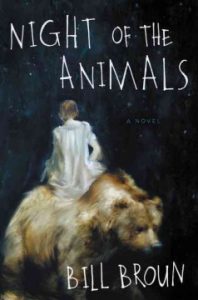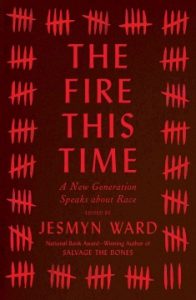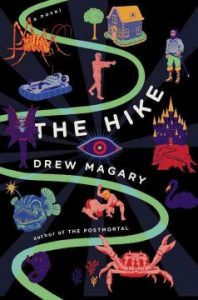And a very happy birthday to the Statue of Liberty!
Well…sort of. On this date in 1884, the cornerstone of the pedestal on which the statue stands was laid on Bedloe’s Island in New York Harbor (the island would be renamed “Liberty Island” in 1956). Originally, Richard Morris Hunt, who was commissed to design and oversee the construction of the pedestal, wanted to use a solid block of granite, but it turns out that granite was no less expensive (comparatively speaking) than it is today, and Hunt was forced to scale back and construct his pedestal out of poured concrete, about 20 feet wide, and then face it with granite quarried from Connecticut. At the time, it was the largest concrete mass ever poured.
The pedestal would not be completed until 1886, when a national fundraiser was able to collect enough money from around the country to afford to erect the Statue.  By that time, Lady Liberty herself had already arrived in pieces into New York Harbor, aboard the French steamer Isère. Nearly as soon as the concrete had set, work began to get the statue settled, and the dedication ceremony was held on October 28, 1886, with President Grover Cleaveland presiding as Master of Ceremonies. Though it was intended that the statue would work as a lighthouse, no one could figure out how to get the light in the torch to shine brightly enough to been seen at night, until 1916, when the torch was replaced with stained glass, and electic lighting installed.
By that time, Lady Liberty herself had already arrived in pieces into New York Harbor, aboard the French steamer Isère. Nearly as soon as the concrete had set, work began to get the statue settled, and the dedication ceremony was held on October 28, 1886, with President Grover Cleaveland presiding as Master of Ceremonies. Though it was intended that the statue would work as a lighthouse, no one could figure out how to get the light in the torch to shine brightly enough to been seen at night, until 1916, when the torch was replaced with stained glass, and electic lighting installed.
And speaking of new arrivals (and graceless shifting of topics!), let’s take a look at some of the new books that meandered onto our shelves this week, and are eagerly waiting for you on our Free For All display!
 The Games: A Global History of the Olympics: With the opening ceremonies of the Summer Olympics kicking off in Rio de Janiero tonight, this book seemed quite an appropriate choice for today. Noted and celebrated sports writer David Goldblatt takes a look not only at the history of the Olympics–both Winter and Summer–but also at the world events that took place around them, from World Wars and political upheavals, to the social and cultural movements that changed the game, including the fight for women to be included as equals, and Second World War veterans establishing the Paralympics. Without shrinking from the often overwhelming economic cost of the Olympics, Goldblatt also manages to show how the Games have in turn affected world events, including the worldwide Civil Rights movement, and the Cold War. The result is a book that sports fans, history buffs, and cultural observers alike can savor, and one which Kirkus called “A tour de force history of the Olympics in romanticized myth and political reality. . . . Gracefully written and compellingly argued, this is one of the best books of the year and one of the best sports books ever written.”
The Games: A Global History of the Olympics: With the opening ceremonies of the Summer Olympics kicking off in Rio de Janiero tonight, this book seemed quite an appropriate choice for today. Noted and celebrated sports writer David Goldblatt takes a look not only at the history of the Olympics–both Winter and Summer–but also at the world events that took place around them, from World Wars and political upheavals, to the social and cultural movements that changed the game, including the fight for women to be included as equals, and Second World War veterans establishing the Paralympics. Without shrinking from the often overwhelming economic cost of the Olympics, Goldblatt also manages to show how the Games have in turn affected world events, including the worldwide Civil Rights movement, and the Cold War. The result is a book that sports fans, history buffs, and cultural observers alike can savor, and one which Kirkus called “A tour de force history of the Olympics in romanticized myth and political reality. . . . Gracefully written and compellingly argued, this is one of the best books of the year and one of the best sports books ever written.”
 Night of the Animals: Bill Broun’s genre-defying debut is getting rave reviews from critics on both sides of the Atlantic for its powerful blend of dystopian science-fiction and innocent fairy tale. Set in London in 2052, the story centers around Cuthbert Handley, a homeless young man who believes that he has been given a gift to communicate with animals–and a calling to set them free. On the night he sneaks into the London Zoo to release the animals there, the rest of the world’s attention is on a suicide cult that threatening to destroy all of earth’s animals along with themselves. As Cuthbert and the legions of the cult flood the streets, it becomes increasingly more difficult to tell if Cuthbert is an agent of mercy, or a pawn in the hands of some truly dastardly people, creating a story that is both a nightmare, and a stunning dream. Publisher’s Weekly gave this book a starred review, saying “Through precise and eloquent prose and a hint of political satire, Broun creates a near future filled with bioelectric technology and characters with patois as diverse as their desires. Broun’s novel is strange, witty, and engrossing, skipping through madness and into the realm of myth.”
Night of the Animals: Bill Broun’s genre-defying debut is getting rave reviews from critics on both sides of the Atlantic for its powerful blend of dystopian science-fiction and innocent fairy tale. Set in London in 2052, the story centers around Cuthbert Handley, a homeless young man who believes that he has been given a gift to communicate with animals–and a calling to set them free. On the night he sneaks into the London Zoo to release the animals there, the rest of the world’s attention is on a suicide cult that threatening to destroy all of earth’s animals along with themselves. As Cuthbert and the legions of the cult flood the streets, it becomes increasingly more difficult to tell if Cuthbert is an agent of mercy, or a pawn in the hands of some truly dastardly people, creating a story that is both a nightmare, and a stunning dream. Publisher’s Weekly gave this book a starred review, saying “Through precise and eloquent prose and a hint of political satire, Broun creates a near future filled with bioelectric technology and characters with patois as diverse as their desires. Broun’s novel is strange, witty, and engrossing, skipping through madness and into the realm of myth.”
 The Fire This Time: In 1963, James Baldwin wrote The Fire Next Time, one of the most significant and moving examinations of race relations in the United States. Now, National Book Award–winner Jesmyn Ward has taken Baldwin’s essay as a starting point for a re-evaluation of race in America, collecting essays, poems, and stories from a diverse and very talented group of young writers. The result is a collection that challenges us to re-think the idea that the post-Civil Rights era is one that is free of hypocrisy and oppression, and sheds a very sensitive, nuanced light on the way that we, as inviduals, and as citizens, interact with each other, and how we can do better. This book has been praised by cultural critics, historians, poets, and readers alike, for being both accessible and deeply thought-provoking, with Vogue saying “Perhaps what The Fire This Time does best is to affirm the power of literature and its capacity for reflection and imagination, to collectively acknowledge the need for a much larger conversation, to understand these split-second actions in present, past, and future tense, the way that stories impel us to do. This is a book that seeks to place the shock of our own times into historical context and, most importantly, to move these times forward.”
The Fire This Time: In 1963, James Baldwin wrote The Fire Next Time, one of the most significant and moving examinations of race relations in the United States. Now, National Book Award–winner Jesmyn Ward has taken Baldwin’s essay as a starting point for a re-evaluation of race in America, collecting essays, poems, and stories from a diverse and very talented group of young writers. The result is a collection that challenges us to re-think the idea that the post-Civil Rights era is one that is free of hypocrisy and oppression, and sheds a very sensitive, nuanced light on the way that we, as inviduals, and as citizens, interact with each other, and how we can do better. This book has been praised by cultural critics, historians, poets, and readers alike, for being both accessible and deeply thought-provoking, with Vogue saying “Perhaps what The Fire This Time does best is to affirm the power of literature and its capacity for reflection and imagination, to collectively acknowledge the need for a much larger conversation, to understand these split-second actions in present, past, and future tense, the way that stories impel us to do. This is a book that seeks to place the shock of our own times into historical context and, most importantly, to move these times forward.”
 The Hike: Drew Magary has a reputation for creating utterly surreal, and yet bitingly insightful tales that are as wildly imaginative as they are grounded in social observations and analysis, and this latest work is no different. Ben is an everyday suburban family man on a busniess trip to Pennsylvania, and decides to take a walk through the woods behind his hotel to pass the time. What he finds is a wonderland of horror and fascination, of beauty and danger…and that he has no choice but to continue going forward, on the hunt for the ‘Producer’ who has created this dreamscape of a reality, and beg to be set free. With influences from film, video game, and fairy tales alike, this is a book that revels in its own weirdness, yet still manages to present a hero whose journey is emotionally spell-binding. Library Journal agrees, cheering that “Magary’s second novel…..is a reminder of not only how easy it is to get lost but also how difficult it can be to find one’s way back. Fast-paced and immensely entertaining, this is highly recommended for sf fans and adventurous literary readers.”
The Hike: Drew Magary has a reputation for creating utterly surreal, and yet bitingly insightful tales that are as wildly imaginative as they are grounded in social observations and analysis, and this latest work is no different. Ben is an everyday suburban family man on a busniess trip to Pennsylvania, and decides to take a walk through the woods behind his hotel to pass the time. What he finds is a wonderland of horror and fascination, of beauty and danger…and that he has no choice but to continue going forward, on the hunt for the ‘Producer’ who has created this dreamscape of a reality, and beg to be set free. With influences from film, video game, and fairy tales alike, this is a book that revels in its own weirdness, yet still manages to present a hero whose journey is emotionally spell-binding. Library Journal agrees, cheering that “Magary’s second novel…..is a reminder of not only how easy it is to get lost but also how difficult it can be to find one’s way back. Fast-paced and immensely entertaining, this is highly recommended for sf fans and adventurous literary readers.”
 I’m Supposed to Protect You From All This: Nadja Spiegelman (daughter of Art Spiegelman, who created the Maus graphic novels), grew up believing that her mother was a fairy. The French-born New Yorker art director Françoise Mouly held a powerful sway over her family and career, over fantasy and reality alike. But, as Nadja grew older, she and her mother grew distant. It wasn’t until she graduated college that her mother told her about her own difficult childhood in France, and the volatile mother she had fled. This book is not only Nadja’s account of her relationship with her mother, but Françoise Mouly’s mother, whom Nadja tracked down in France, and whose stories totally contradicted the ones that Françoise had told, providing readers with a story that his haunting in its details, and utterly relatable, as are all tales of families and inheritance and memory. Booklist gave this a starred review, calling Spieglman’s book “Stunning and artistic…[a] touching, surprising consideration of the unclear inheritances of family, and the certain fallibility of memory… [Spiegelman] writes page-turning true stories of women, their work and love, which read like novels, and gains the rare sort of understanding that precludes the need for forgiveness.”
I’m Supposed to Protect You From All This: Nadja Spiegelman (daughter of Art Spiegelman, who created the Maus graphic novels), grew up believing that her mother was a fairy. The French-born New Yorker art director Françoise Mouly held a powerful sway over her family and career, over fantasy and reality alike. But, as Nadja grew older, she and her mother grew distant. It wasn’t until she graduated college that her mother told her about her own difficult childhood in France, and the volatile mother she had fled. This book is not only Nadja’s account of her relationship with her mother, but Françoise Mouly’s mother, whom Nadja tracked down in France, and whose stories totally contradicted the ones that Françoise had told, providing readers with a story that his haunting in its details, and utterly relatable, as are all tales of families and inheritance and memory. Booklist gave this a starred review, calling Spieglman’s book “Stunning and artistic…[a] touching, surprising consideration of the unclear inheritances of family, and the certain fallibility of memory… [Spiegelman] writes page-turning true stories of women, their work and love, which read like novels, and gains the rare sort of understanding that precludes the need for forgiveness.”
Until next week, beloved patrons–Happy Reading!



